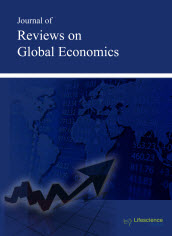Islamic Banks in the Global Economy with Special Reference to in CIS Countries
DOI:
https://doi.org/10.6000/1929-7092.2020.09.09Keywords:
Islamic banks, Islamic Finance, interest-free financing, loan interest.Abstract
The subject of the article is Islamic banks – a special form of banking business, in which services are provided to customers on an interest-free basis. The article discusses the reasons why Islamic banks emerged and spread, and considers the dynamics and geographical distribution of their assets in the world economy. Particular attention is paid to the theory and practice of Islamic banks performance, their main differences from conventional banks, as well as basic mechanisms of Islamic financing. Problems that make it difficult for Islamic banks to expand in non-Muslim countries have been revealed. The experience of Islamic banks in the post-Soviet space has been analyzed, and the practical experience and success of these financial institutions have been considered.
References
Al-Jarhi M., Iqbal M. (2001), Islamic Banking: Answers some frequently asked questions, Islamic Research and Training Institute, Occasional Paper No.4. p.10-23.
Aliyev S. (2012), Azerbaijan becoming regional center of Islamic banking, http://www.azernews.az/business/44544.html.
Ashraf D., Ramady M., Albinali A. (2016) Are Islamic Banks Any Different in Financial Stability? An Empirical Investigation. Islamic Research and Training Institute, Working Paper No.10, pp. 4-40.
https://doi.org/10.2139/ssrn.3022446
Belouafi A., Chachi A. (2014), Islamic Finance in the United Kingdom: Factors Behind its Development and Growth, Islamic Economic Studies Vol. 22, No. 1, p.53
https://doi.org/10.12816/0004130
Birjukov E. (2008), The new trends in the activities of Islamic banks [Novye tendencii v dejatel'nosti islamskih bankov]. Mirovaya ekonomika i mezhdunarodnye otnosheniya, No.7, p.87.
Imam P., Kpodar K. (2010) Islamic Banking: How Has it Diffused? , IMF Working Paper, August, p.4.
https://doi.org/10.5089/9781455205257.001
IFSB (2016), Islamic Financial Services Industry Stability Report, Islamic Financial Services Board, p.8.
IRTI (2016) Islamic Finance: A Catalyst for Shared Prosperity? Global Report on Islamic Finance, Islamic Research and Training Institute, p.57.
Hasan, Zubair (2015): Risk sharing versus risk transfer in Islamic Finance: A Critical Appraisal, ISRA International Journal of Islamic Finance, Kuala Lumpur Vol. 7, Issue 1, June.
https://doi.org/10.12816/0021394
Hasan, Zubair (2002): “Mudarabah as a Mode of Financing in Islamic Banking: Theory, Practice and Problems” Middle East Business and Economic Review Vol. 14, No. 2, Sydney, Australia, December pp. 41-53
MIS, (2016). A New Frontier for Islamic Finance. Kazakhstan Islamic Finance, Mutual Insurance Society “Takaful” Halal Insurance, pp.41-45.
Rahim A., Rahman A. (2000) Islamic Banking and Finance: between Ideals and Realities, IIUM Journal of Economics and Management , No. 2 , p.214.
Sundararajan V., Errico L. (2002), Islamic Financial Institutions and Products in the Global Financial System: Key Issues in Risk Management and Challenges Ahead, IMF Working Paper, No.02/192, November 1.
https://doi.org/10.5089/9781451859775.001
Wilson R (2014) Islamic Finance and Economic Development: Lessons Learnt. Islamic Research and Training Institute , 2014. p.17.
Downloads
Published
How to Cite
Issue
Section
License
Policy for Journals/Articles with Open Access
Authors who publish with this journal agree to the following terms:
- Authors retain copyright and grant the journal right of first publication with the work simultaneously licensed under a Creative Commons Attribution License that allows others to share the work with an acknowledgement of the work's authorship and initial publication in this journal.
- Authors are permitted and encouraged to post links to their work online (e.g., in institutional repositories or on their website) prior to and during the submission process, as it can lead to productive exchanges, as well as earlier and greater citation of published work
Policy for Journals / Manuscript with Paid Access
Authors who publish with this journal agree to the following terms:
- Publisher retain copyright .
- Authors are permitted and encouraged to post links to their work online (e.g., in institutional repositories or on their website) prior to and during the submission process, as it can lead to productive exchanges, as well as earlier and greater citation of published work .






